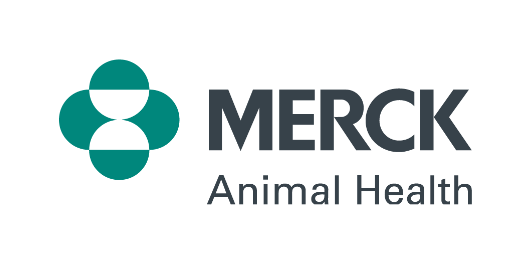
Immunity-Led Protection in Calves: Building Health from Day One
Calves arrive in the world with huge potential and fragile defenses. Immunity-led protection is a practical, evidence-informed approach that combines colostrum management, nutrition, vaccination and hygiene to support calf immunity while reducing pathogen exposure. The goal is simple: reduce disease, improve growth and productivity, and lower labor and treatment costs. Here is a clear, farm-focused guide to what immunity-led protection means in practice and how to put it into action.
Immunity-led protection matters because young calves are immunologically naïve. They depend on maternal antibodies received through colostrum during the first hours of life and on the rapid maturation of their own immune system. Enteric and respiratory diseases are the main causes of illness and death in youngstock, and outbreaks can have long-term effects on growth, fertility and lifetime productivity. Rearing youngstock is often the farm’s second-largest fixed cost after feed, so preventing disease delivers both animal welfare and financial returns.
The first pillar of immunity-led protection is optimal colostrum management. Timing, quality, quantity and cleanliness all matter. Best practice is to feed an appropriate volume of good-quality colostrum as soon as possible after birth, ideally within the first two hours and certainly within six hours. Colostrum quality should be tested, and low-quality or contaminated colostrum should be discarded. Adequate passive transfer of immunoglobulins greatly reduces the risk of neonatal infections and mortality.
Nutrition that supports immune development is the second pillar. Consistent energy and protein intake, access to clean water and careful management around weaning all contribute to stronger immune responses. Providing milk or a properly formulated milk replacer at levels that support steady growth, introducing a high-quality calf starter early to promote rumen development and avoiding sudden dietary changes reduce stress and improve resilience. Well-nourished calves recover faster from disease and are better able to withstand challenges.
Targeted vaccination is the third pillar. Vaccination should be strategic and carried out as part of a herd health plan developed with a veterinarian. Maternal vaccination in late gestation can increase specific antibodies in colostrum, and calf vaccination schedules should be timed to stimulate active immunity at the appropriate age. Vaccine choice should be tailored to the herd’s disease profile, covering relevant respiratory pathogens and enteric agents where necessary. Vaccination primes the calf’s immune system or boosts maternal antibodies passed in colostrum, which reduces the incidence and severity of disease. Newer vaccines offer protection to newborn calves at birth by being administered to pregnant cows in their third trimester, not directly to the calf at birth. The vaccine causes the cow to produce antibodies in her colostrum, which are then transferred to the calf when it is fed colostrum after birth, helping to reduce clinical signs of Cryptosporidium infection like diarrhea.
Reducing infection pressure through hygiene and management forms the fourth pillar. Environmental factors such as ventilation, stocking density, bedding condition and cleaning routines influence disease risk. Grouping calves by age, maintaining clean dry bedding, ensuring good ventilation without drafts, isolating sick animals promptly and enforcing hygiene for feeding equipment and staff handling all reduce the number of pathogens calves encounter. Quarantine for new arrivals and control of visitor and equipment movement further limit introductions of infectious agents. Lowering pathogen exposure gives the calf’s immune system a better chance to cope and develop.
Several supporting actions and tools make these pillars more effective. Regular monitoring and record-keeping of passive transfer status, growth rates, scour and respiratory scores, treatments and mortalities reveal trends and allow early intervention. Structured checklists and audits help veterinarians and farm teams assess performance across colostrum, nutrition, infection pressure, environment and goal-setting. Technology such as on-farm diagnostics, automated feeders, climate control and herd management software can standardize good practice and provide actionable insights.
Putting immunity-led protection into practice starts with a thorough assessment of colostrum protocols, nutrition, housing, vaccination status and disease patterns in partnership with a veterinarian. Identifying the highest-impact gaps, such as poor passive transfer or inadequate hygiene of feeding equipment, allows the team to prioritise interventions. Setting measurable goals, assigning responsibilities and implementing changes such as colostrum testing, updated vaccination schedules, pen redesign and staff training create a clear path forward. Regular review of outcomes and refinement of the plan help sustain improvements.
Common pitfalls include assuming a one-size-fits-all solution, overlooking colostrum, delaying veterinary input and failing to monitor results. Programs must be tailored to farm-specific risks and resources, since poor passive transfer undermines other measures and veterinary guidance is crucial for vaccine choice and diagnostic interpretation. Without measurement, it is impossible to know whether changes are achieving the desired effect.
In summary, immunity-led protection is a layered, practical strategy that begins at birth and continues through weaning. Ensuring timely high-quality colostrum, consistent nutrition, sensible vaccination and strong hygiene and management reduces disease, boosts performance and protects both animals and livelihoods. Working with veterinarians and using simple monitoring tools turns these principles into measurable on-farm gains.
